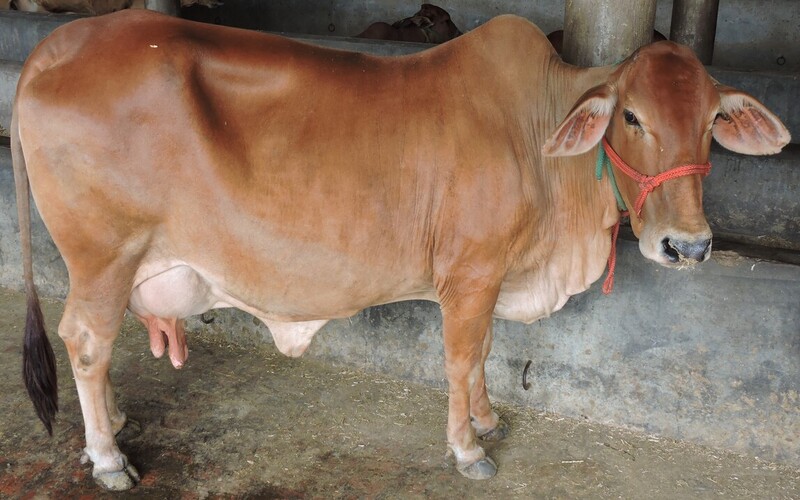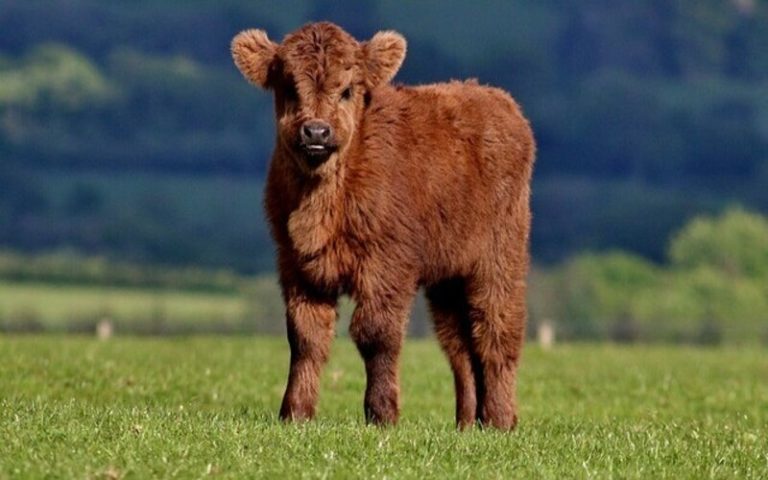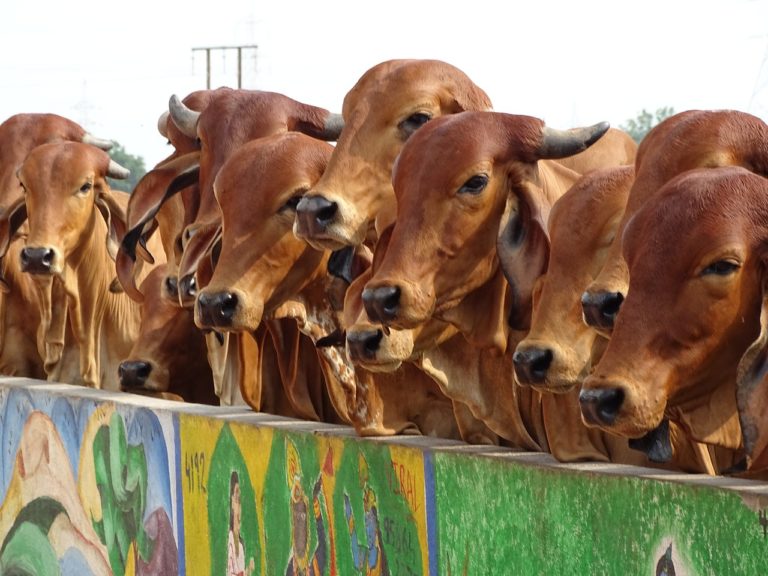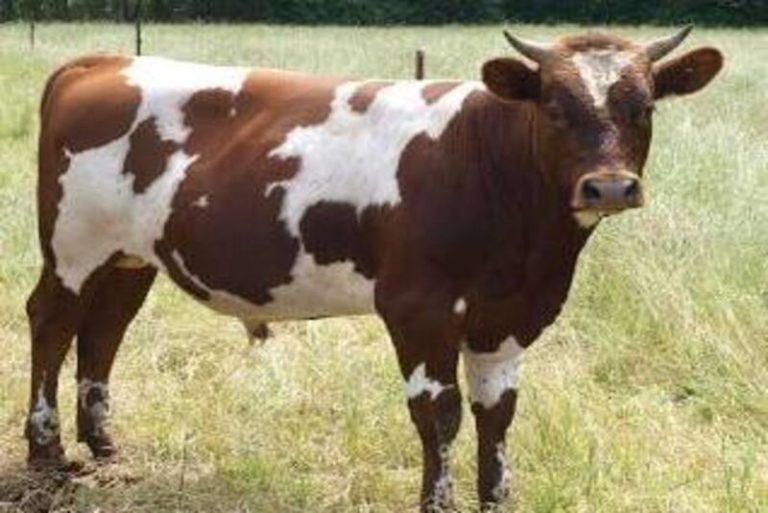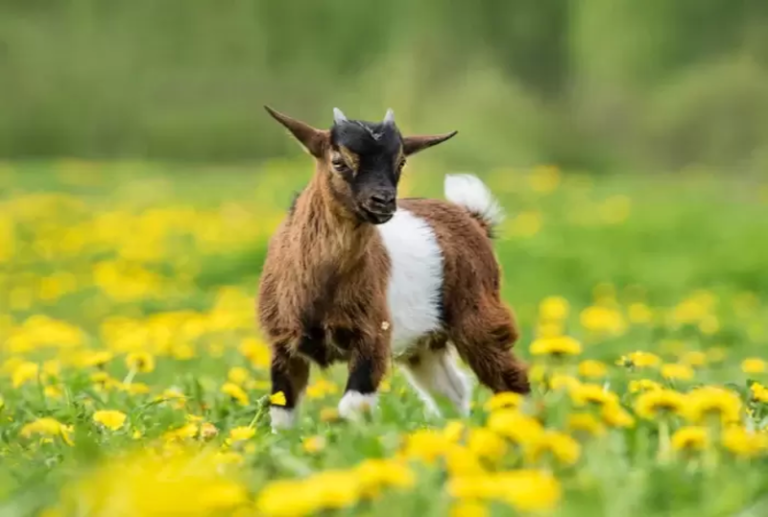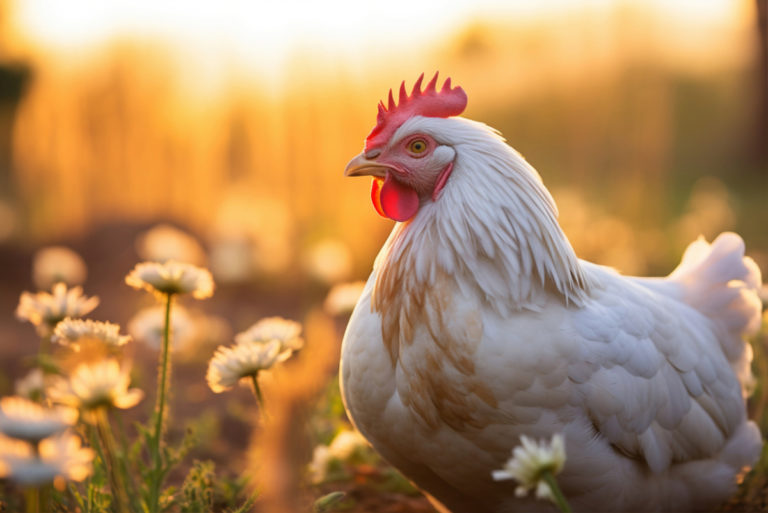Sahiwal Cattle: A Valuable Breed for Dairy Production and More
Sahiwal cattle are a breed of zebu ( Bos Indicus ) that is native to the Punjab region of Pakistan and India. These hardy and adaptable cattle are known for their high milk production and resistance to disease, making them a valuable breed in many parts of the world.
In this article, we’ll talk about the history, traits, and uses of Sahiwal cattle, as well as their current situation and their chances for the future.
History of Sahiwal Cattle
Sahiwal cattle are believed to have originated in the arid regions of the Punjab, in what is now Pakistan and India. These cattle were highly prized by the local farmers for their ability to survive in harsh conditions and produce high-quality milk.
The breed is named after the Sahiwal district of Pakistan, where the first herd book was established in 1924. Later, Sahiwal cattle were brought to other parts of the world, like Africa, Australia, and the Americas, where they helped improve local breeds and make more milk.
In the 1960s, Sahiwal cattle were imported to the United States as part of a program to develop high-yielding dairy breeds. However, the program was discontinued in the 1970s due to concerns about the breed’s low milk production compared to other dairy breeds.
Today, Sahiwal cattle are found in many parts of the world, including Africa, South America, and Australia, as well as in their countries of origin. They are still very valuable because they are hardy, don’t get sick often, and can make high-quality milk in hot, dry places.
In recent years, there has been renewed interest in the Sahiwal breed as a result of growing concerns over climate change and the need for sustainable and resilient livestock breeds.
The ability of Sahiwal cattle to thrive in hot, arid environments and their resistance to disease make them well-suited to the challenges of climate change and the pressures of modern farming practices.
As a result, there are ongoing efforts to preserve the genetic diversity of the breed as well as to promote sustainable and organic farming practices that prioritize animal welfare and environmental sustainability.
In addition, there is growing interest in niche markets for high-quality dairy products, which could provide new opportunities for farmers who raise Sahiwal cattle.
Physical Characteristics of Sahiwal Cattle
Sahiwal cattle are a large breed of zebu cattle that are well-adapted to hot, arid climates. Zebu breeds are easily recognized by the hump on their shoulders, and they are usually a light red or brown color, but they can also be white or black. Here are some physical characteristics of Sahiwal cattle:
- Body size and weight: Sahiwal cattle are large, with bulls weighing between 400 – 600 kg ( 880 -1320 lbs. ) and cows weighing between 300-450 kg ( 660-990 lbs. ).
- Hump: The hump on Sahiwal cattle is large and muscular and is used as a store of energy and water in times of scarcity.
- Coat color: Sahiwal cattle have a light red or brown coat color, although they can also be white or black. The color of their coats can vary depending on the region they come from.
- Ears: Sahiwal cattle have large, floppy ears that help to dissipate heat and keep them cool in hot climates.
- Horns: Both bulls and cows have horns that curve upward and backward. Their horns can be quite large, with some bulls having horns that are more than a meter (3 feet) in length.
- Skin: Sahiwal cattle have loose skin that helps to insulate them from the heat and also provides protection against insect bites and diseases.
- Milk production: Sahiwal cows are known for their high milk production, with some individuals producing up to 10 liters (2.6 gallons) of milk per day.
- Adaptability: Sahiwal cattle are highly adaptable and are able to thrive in hot, arid environments where other breeds of cattle would struggle. They are also resistant to many common diseases and parasites.
- Docile temperament: Sahiwal cattle are generally known for their docile temperament, which makes them easier to handle and manage than some other breeds of cattle.
Overall, the physical characteristics of Sahiwal cattle make them well-suited to hot, arid environments and make them an ideal breed for dairy production, meat production, and draft work. Their adaptability, resistance to disease, and high milk production make them a valuable asset to farmers in many parts of the world.
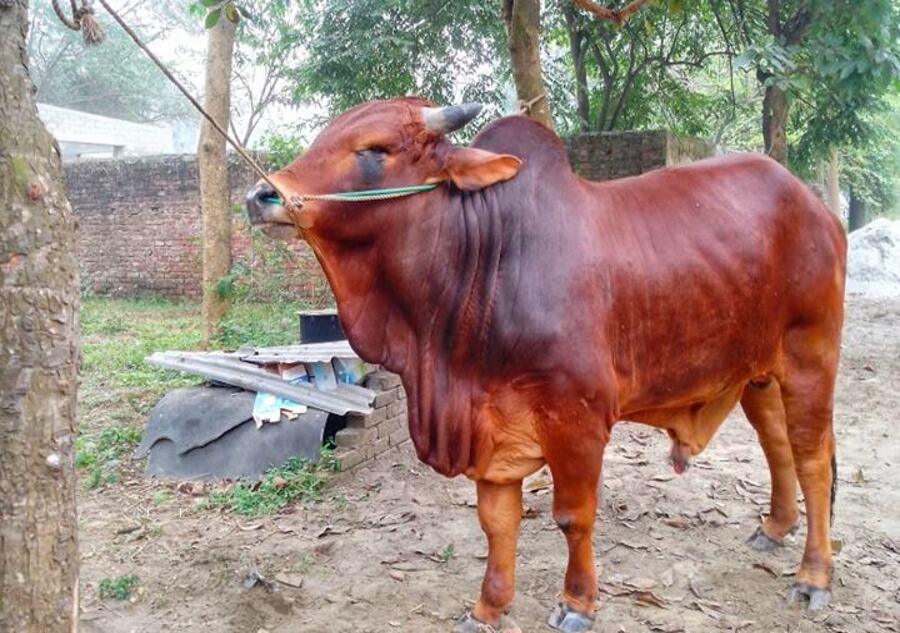
Uses of Sahiwal Cattle
Sahiwal cattle are primarily used for dairy production, although they are also valued as draft animals and for meat. Their milk is high in butterfat and protein, making it ideal for making cheese and other dairy products. People know that Sahiwal cows make a lot of milk, and some of them can make up to 10 liters per day.
In addition to their milk production, Sahiwal cattle are also well-suited to draught work, with their strong, sturdy build and powerful legs making them ideal for pulling carts and plows. They are also raised for their meat, which is lean and high in protein.
Sahiwal cattle are also used to improve local breeds in many parts of the world, as their hardiness and resistance to disease make them valuable for crossbreeding programs. By adding Sahiwal genes to local breeds, farmers can make animals that are more productive and better suited to their environment.
Adaptability and Climate Resilience of Sahiwal Cattle
Sahiwal Cattle are renowned for their exceptional adaptability and climate resilience, making them a preferred choice for livestock farming in various regions. Let’s delve into the specific characteristics that make Sahiwal Cattle well-suited to different environmental conditions.
Heat Tolerance: Sahiwal Cattle have grown up in hot, dry places like Pakistan’s Sahiwal area. They can handle high temperatures very well, which lets them grow in hot places. The light to dark colors of their coats help to absorb sunshine and keep them from getting too hot.
Drought Resistance: Sahiwal Cattle have a natural ability to withstand drought conditions. They can efficiently utilize scarce water resources and exhibit a reduced need for frequent watering. This resilience makes them suitable for regions with limited water availability or during dry spells.
Grazing Efficiency: Sahiwal Cattle possess an exceptional ability to utilize grazing resources efficiently. They are capable of foraging for longer durations, effectively extracting nutrients from grass and other vegetation. This grazing efficiency enables them to sustain themselves in areas with limited pasture availability.
Disease Resistance: Sahiwal Cattle display a higher resistance to various common cattle diseases. Their robust immune system helps them withstand and recover from illnesses more effectively than some other breeds. This resilience reduces the risk of health issues, contributing to their overall adaptability.
Environmental Flexibility: Sahiwal Cattle can adapt to different geographical regions and climatic conditions. Whether it’s hot and dry regions, humid environments, or even areas prone to extreme temperature fluctuations, Sahiwal Cattle can adjust and thrive. Their ability to acclimate to diverse climates makes them versatile and suitable for a range of farming conditions.
Fertility and Reproductive Performance: Sahiwal Cattle exhibit excellent fertility and reproductive traits, even in challenging environments. They have a high conception rate and comparatively shorter calving intervals. This adaptability in reproduction ensures efficient herd expansion and overall productivity.
Stress Tolerance: Sahiwal Cattle have a lower stress response, allowing them to better cope with environmental challenges. They show resilience during transportation, changes in feed or water availability, and other stressful situations. This adaptability to various stressors contributes to their overall ability to thrive in different climates.
Sahiwal Cattle possess exceptional adaptability and climate resilience. Their heat tolerance, drought resistance, grazing efficiency, disease resistance, environmental flexibility, reproductive performance, and stress tolerance make them well-suited for diverse farming conditions. Farmers in different regions can benefit from the hardiness and productivity of Sahiwal Cattle, ensuring sustainable livestock farming practices even in challenging environments.
Breeding and Management Practices of Sahiwal Cattle
Breeding and management practices play a crucial role in maximizing the potential of Sahiwal Cattle for optimal productivity and overall herd improvement. Here are key considerations for breeding and managing Sahiwal Cattle:
Selecting Breeding Stock:
- Choose high-quality Sahiwal Cattle with desirable traits such as good conformation, strong body structure, and overall health.
- Look for Sahiwal bulls with proven genetics for milk production, meat quality, and adaptability to specific environmental conditions.
- Assess the breeding stock’s pedigree and lineage to ensure genetic diversity and reduce the risk of inbreeding.
Proper Nutrition and Feeding:
- Give Sahiwal Cattle a varied meal that meets their nutritional needs at different times of life, such as when they are calves, heifers, bulls, or cows that are lactating.
- Offer a mix of good-quality food, like grass and beans, and extra feed to make sure the animal gets enough energy, protein, vitamins, and minerals.
- Talk to a vet or animal nutritionist about making a custom feeding plan for your herd based on its unique needs and the resources you have.
Health Management and Disease Prevention:
- Establish a comprehensive herd health program in consultation with a veterinarian to prevent and manage common cattle diseases.
- Ensure regular vaccinations, deworming, and parasite control measures are implemented to protect the health and well-being of Sahiwal Cattle.
- Provide proper housing and hygiene practices to minimize the risk of infections and maintain a clean and sanitary environment for the herd.
Breeding Techniques and Artificial Insemination:
- Employ proper breeding techniques to ensure successful reproduction and genetic improvement.
- Utilize natural mating with carefully selected Sahiwal bulls or consider artificial insemination (AI) using high-quality semen from superior bulls.
- AI allows for better genetic control, a wider selection of sires, and access to superior genetics without the need to physically own and manage multiple bulls.
Record-Keeping and Performance Monitoring:
- Maintain accurate records of each animal’s pedigree, breeding history, health records, and performance data, including milk production, growth rates, and reproductive performance.
- Regularly monitor and evaluate individual animal and herd performance to identify areas for improvement and make informed breeding and management decisions.
- Implement performance testing programs, such as measuring milk yield, weight gain, and carcass characteristics, to identify superior animals for breeding and culling decisions.
It is important to note that working closely with experienced breeders, veterinarians, and agricultural extension services can provide valuable guidance and support in implementing effective breeding and management practices for Sahiwal Cattle. By prioritizing proper breeding, nutrition, health management, and performance monitoring, farmers can enhance the productivity, genetic quality, and overall success of their Sahiwal Cattle herd.
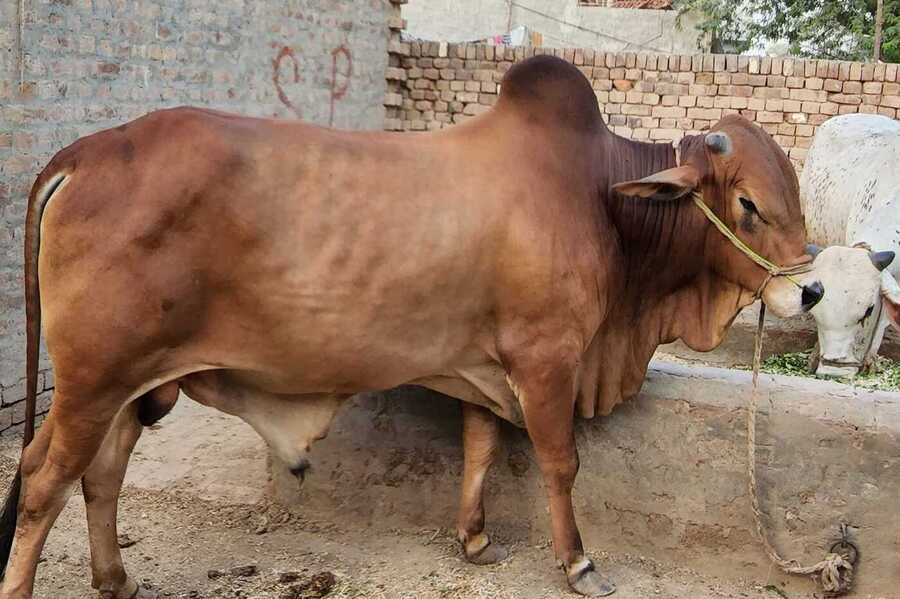
Current Status and Future Prospects
Sahiwal cattle are currently found in many parts of the world, including Pakistan, India, Africa, Australia and the Americas. The breed is especially popular in countries with hot, dry climates because they are hardy and able to adapt to their surroundings.
Despite their many advantages, however, Sahiwal cattle face a number of challenges in the modern world. One of the biggest threats to the breed is competition from other high-yielding dairy breeds, which can outcompete Sahiwal cattle in terms of milk production.
The genetic diversity of Sahiwal cattle is also being lost because of things like inbreeding and other things. To solve this problem, many groups are working on breeding programs and setting up conservation herds to keep the genetic diversity of the breed.
There is also a growing interest in organic and sustainable farming practices, which could provide new opportunities for Sahiwal cattle. Because Sahiwal cattle are hardy and don’t get sick easily, they work well in organic farming systems that put animal welfare and environmental sustainability first.
In addition, there is a growing demand for dairy products that are produced using traditional and artisanal methods. With its high butterfat content and rich flavor, Sahiwal milk could be a good fit for these niche markets. This would give farmers who raise Sahiwal cattle a new way to make money.
Conclusion
Sahiwal cattle are a valuable breed that is well-suited to hot, arid climates and harsh environmental conditions. Their high milk production, resistance to disease, and strong build make them ideal for dairy production, draft work, and meat production.
Despite facing competition from other high-yielding dairy breeds, Sahiwal cattle continue to be raised in many parts of the world. We can make sure that this valuable breed continues to do well in the future by protecting their genetic diversity and promoting sustainable and organic farming methods.
FAQ:
Q: What are Sahiwal Cattle?
A: Sahiwal Cattle is a breed of cattle originating from the Sahiwal district in Pakistan. They are known for their adaptability, high milk production, and quality beef.
Q: What are the physical characteristics of Sahiwal Cattle?
A: Sahiwal Cattle have a well-developed body structure, a medium-to-large size, and various coat colors and patterns. They may have beautiful horns and exhibit good overall conformation.
Q: What is the adaptability of Sahiwal Cattle to different climates?
A: Sahiwal Cattle are highly adaptable to different climates. They have excellent heat tolerance, can withstand drought conditions, and are resilient in various geographical regions.
Q: Are Sahiwal Cattle suitable for milk production?
A: Yes, Sahiwal Cattle are known for how much milk they produce. They have the ability to give a lot of milk, and their milk is high in butterfat and protein.
Q: Can Sahiwal Cattle be raised for meat production?
A: Absolutely. Sahiwal Cattle are dual-purpose animals, meaning they are suitable for both milk and meat production. They have tender and flavorful beef, which is in demand in the market.
Q: Are Sahiwal Cattle profitable for farmers?
A: Yes, Sahiwal Cattle farming can be profitable for farmers. They offer a dual-purpose advantage, allowing farmers to benefit from milk and meat production. They are also cost-effective to raise.
Q: What are the breeding and management practices for Sahiwal Cattle?
A: Breeding and management practices for Sahiwal Cattle involve selecting high-quality breeding stock, providing proper nutrition, implementing health management measures, and utilizing breeding techniques like artificial insemination.
Q: Are Sahiwal Cattle resistant to diseases?
A: Sahiwal Cattle display a higher resistance to common cattle diseases due to their robust immune systems. However, proper health management practices and preventive measures should still be implemented.
Q: How can Sahiwal Cattle contribute to conservation efforts?
A: Sahiwal Cattle conservation efforts involve preserving the breed’s genetic diversity, promoting responsible breeding practices, and supporting initiatives by governments and organizations focused on breed conservation.
Q: What is the future outlook for Sahiwal Cattle?
A: The future outlook for Sahiwal Cattle is promising. They have the potential for further development and growth, and their adaptability and productivity make them a valuable asset in livestock farming.
Also Read :-
Livestock: The Backbone of Agricultural Systems and Food Production

